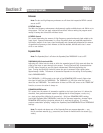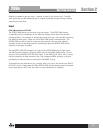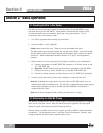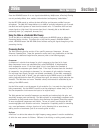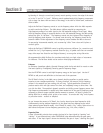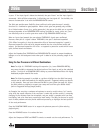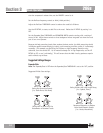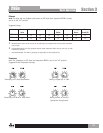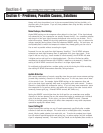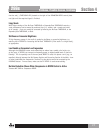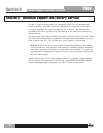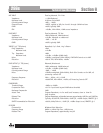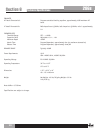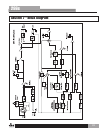
286
Section 4
Problems, Possible Causes, Solutions
16
Section 4 - Problems, Possible Causes, Solutions
Always verify that the problem is not in the source material being fed into the 286s, or in
the other parts of the system. If you still have problems when using the 286s, consider the
following remedies.
Noise Rushups, Hiss Buildup
Higher DRIVE settings on the compressor often add gain to the signal. If the signal already
has substantial hiss, the compression can actually increase the hiss. As a compressor releases
and the gain of the input signal increases, background noise and hiss can increase. This is
called noise rushup. Remedy this by using compression conservatively. Also, to reduce noise
rushups, especially during pauses, lower the Compressor DENSITY setting. For both cases, set
the Expander/Gate to match the compressor’s release time, thereby gating out the noise or
hiss as much as possible without truncating the signal.
Increased hiss can also result from high frequency “detailing.” The HF DETAIL enhancer
estimates how much high frequency boost is appropriate for a given input signal. If the
signal is dull but noisy (e.g., vocals recorded to a bad cassette), the HF DETAIL will make
it brighter and can pull up hiss to objectionable levels. (The hiss will often be audibly
modulated by the material because the HF DETAIL is adaptive to the material.) Reduce the
setting of the HF DETAIL control until the effect is no longer objectionable.
For multitrack studio applications, consider gating out the hiss during the initial recording,
then adding HF DETAIL enhancement afterwards, during mixdown.
Audible Distortion
With certain combinations of controls, especially when they are used at more extreme settings
(towards fully clockwise), distortion or artifacts may occur. In this case, lessen one of more
of the controls in use. For example, higher DRIVE settings on the compressor often add
gain to low-level signal, especially when used in conjunction with other controls. To reduce
distortion, simply reduce the compression setting. If you still want more compression, return
the compression to its previous setting, and reduce one or more of the other controls which
commonly increase gain (e.g., Enhancer DETAIL controls, MIC GAIN, etc.).
Setting the DENSITY control higher than the 12:00 position can sometimes cause audible
distortion in the bass because the very fast release time begins to modulate each individual
cycle of the bass waveform. If this occurs, turn down the DENSITY control. (Patented
circuitry in the 286s greatly reduces this effect when compared to many other compressors
operated at equally fast release times).
Sound Cutting Off
Higher Expander/Gate settings can cut off sounds prematurely, specifically after a sudden
transient or loud note has decayed. This could result in unintelligible vocals, incomplete
chords, inferior cymbal splashes, lost reverb tails, etc. To retain the complete input signal,
but still maintain required expansion and gating (e.g., to reduce settings until the complete
signal is adequately restored). This means that you should set the Expander/Gate controls so
286s



